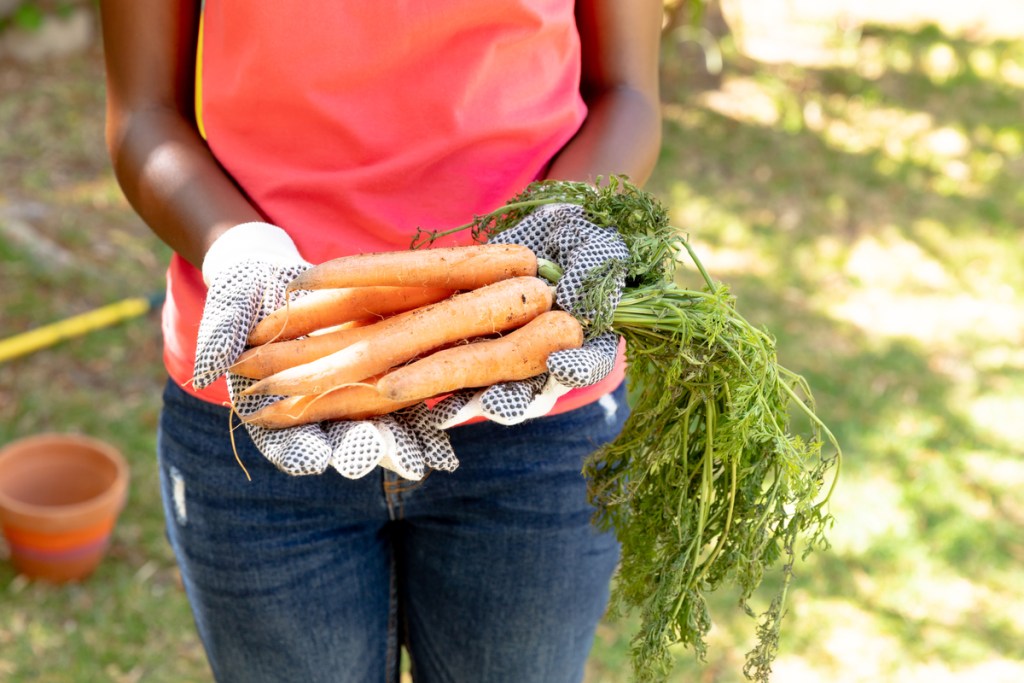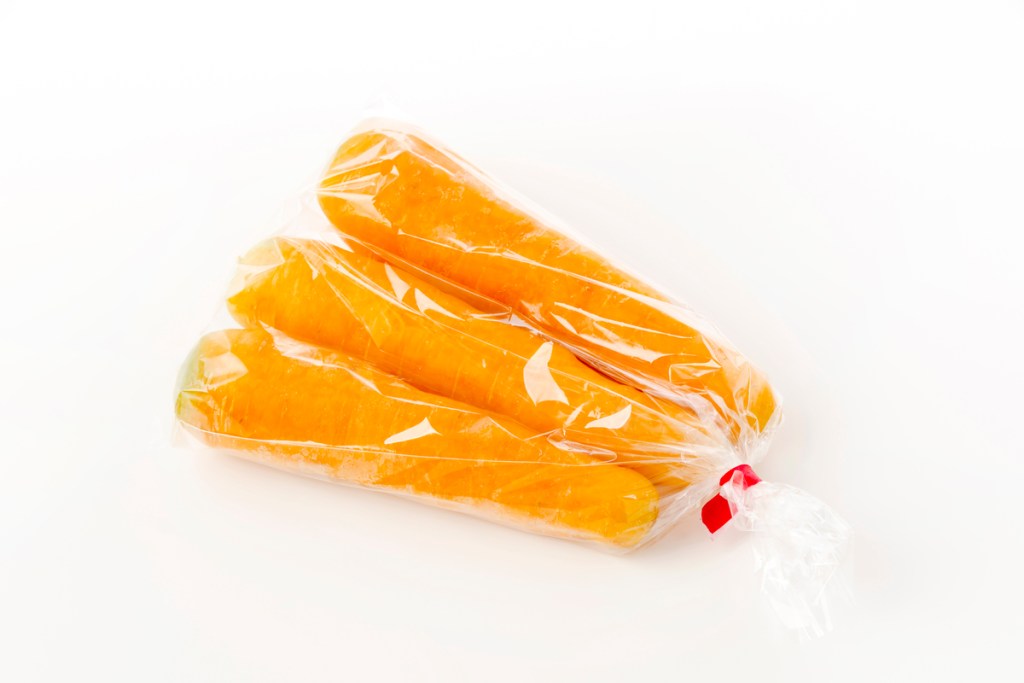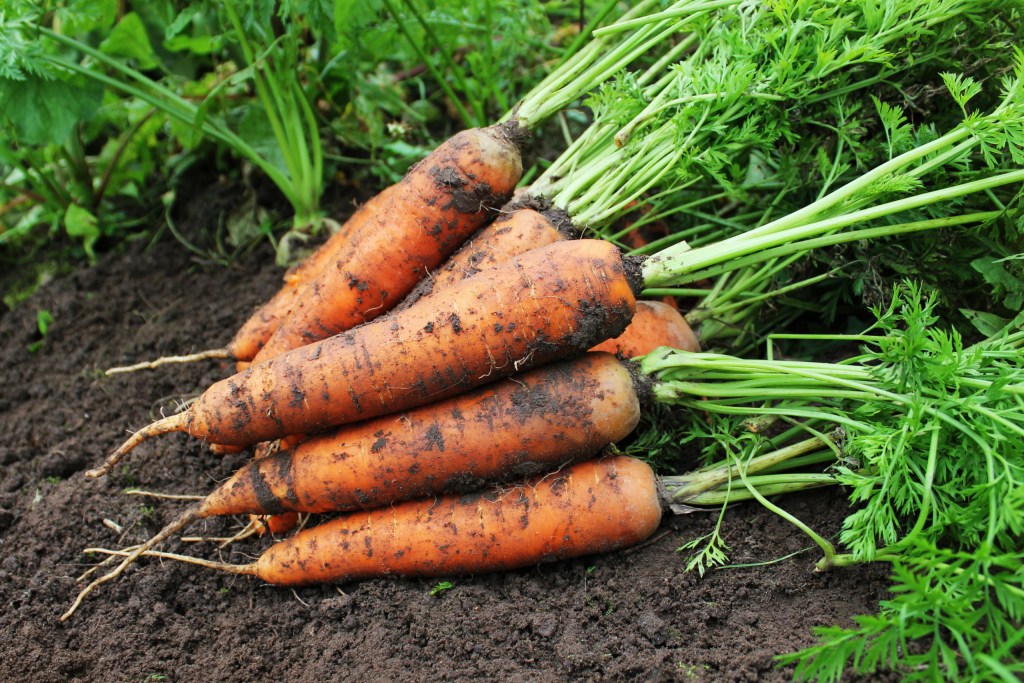Carrots give gardeners a bit of a hard time early on. From their extended and intermittent germination period to the tedious processes of weeding and thinning, it’s easy to wonder if they’re worth the effort. That is, until you eat one.
Garden-fresh carrots, especially the summer planted crop harvested after a light frost, have a fullness of flavor and crispy sweetness that far surpasses that of their grocery store counterparts. If you want to fully reap the rewards of a delicious crop, you’ll need to know how to store carrots from the garden.

When is the best time to harvest carrots?
The entire carrot plant is edible from the time the seed sprouts, so there’s no “wrong” time to harvest carrots. It’s also important to note that, as biennials, carrots store quite well in the ground. It could work to just harvest enough for immediate use. But, if you plan to store them for an extended period, there is an ideal maturity window.
Carrots planted for a fall harvest tend to store the best. These should be planted 10 to 12 weeks before the average first fall frost date. Here's how to find the correct harvest time for your carrots:
Step 1: Note the “days to harvest” on the seed packet, and count forward that many days from the date on which you planted the seeds.
Step 2: After 10 to 12 weeks, start sampling to see if they are ready to pull. Fully mature, storage-ready carrots have a blunted or slightly rounded tip and well developed flavor.
How to harvest carrots
Step 1: To harvest carrots, carefully loosen the soil around the roots with a garden fork or spade, being careful not to cut or puncture the carrots. Insert the blade in the ground vertically, as deeply as it will go, a few inches away from the carrots, and gently rock it backward and forward.
Step 2: Grasp the carrot foliage near the ground and pull it straight out.
Step 3: Remove the foliage immediately, one-quarter to one-half inch above the crown of the root, and rub off any excess soil.
Step 4: There’s no need to wash the carrots at this point, and in fact doing so could lead to damage that may worsen during storage.
However if the carrots are really dirty, or if you just can’t stand the thought of not washing them, wash them with cold water and let them thoroughly air dry before placing them in storage.

The refrigerator method
Carrots store best in temperatures between 32 and 38 degrees Fahrenheit, with a relative humidity above 95%. Small crops can store in the refrigerator for two to three months. Here's how.
Step 1: Place similarly sized carrots into zip-close plastic storage bags.
Step 2: Squeeze the air out of the bags and seal them.
Step 3: Store them in the refrigerator on a shelf or in the crisper.
Step 4: Use the smallest roots first.
Step 5: Check all stored carrots weekly, and dispose of any that begin to go bad.
The root cellar method
If you have a large crop that won’t fit in the refrigerator, and an unheated garage, basement, or shed that stays between 32 and 40 degrees Fahrenheit, you could store your carrots and other root veggies in sand. Here's how to do it:
Step 1: Make sure you have clean, damp sand and enough containers to hold your crop. Use 5-gallon buckets, plastic-lined crates, or wax-lined cardboard boxes.
Step 2: Fill the containers where they will be stored. They will quickly become heavy, making them difficult to move when filled.
Step 3: Put a layer of sand in the bottom of the container.
Step 4: Stand up a group of carrots (position them vertically, as they grow) so they aren't touching one another.
Step 5: Cover the carrots with sand.
Step 6: Alternate layers of carrots and sand until the container is full.
Step 7: Top it off with a layer of sand. Make sure no carrots are visible above the sand.

The in-ground method
In areas where the soil remains well above freezing, root quality will decline over winter, so this method is not really viable. In cool climates, where soil temperatures hold near or slightly above freezing, carrots can remain in the ground through the winter with no additional protection.
If your climate is compatible, here's how to store your carrots in the ground:
Step 1: Before the ground freezes, insulate the bed with 12 to 18 inches of straw or fallen leaves.
Step 2: Add a layer of plastic over the straw or leaves.
Step 3: Uncover the bed and sweep aside the mulch as needed to harvest throughout the winter.
Observe proper care in the way you harvest and clean and store your carrots, as this will affect their storage quality. Carrots can easily become soft and slimy, but if you handle them property, you can make your carrots last up to a month or more in storage.
Editors' Recommendations
- Plant these stunning flowering shrubs for a showstopping garden display this spring
- How to get rid of gnats without damaging your plant’s sensitive leaves
- Growing cocoa plants in the U.S. is difficult (but not impossible): What we know
- Your guide to miniature rose care for a beautiful spring garden
- 3 incredible reasons why you should be using coffee grounds in your garden





